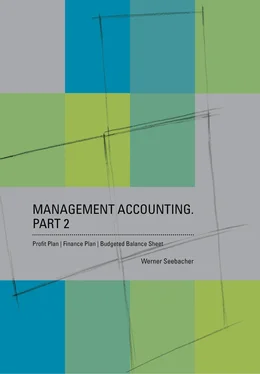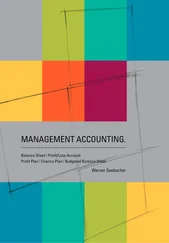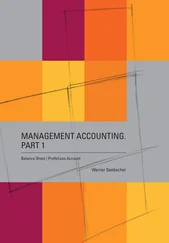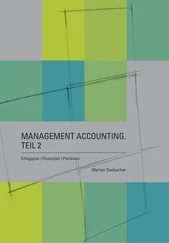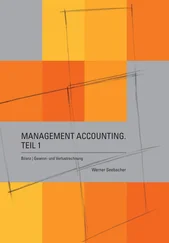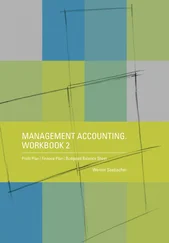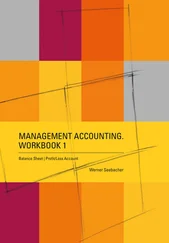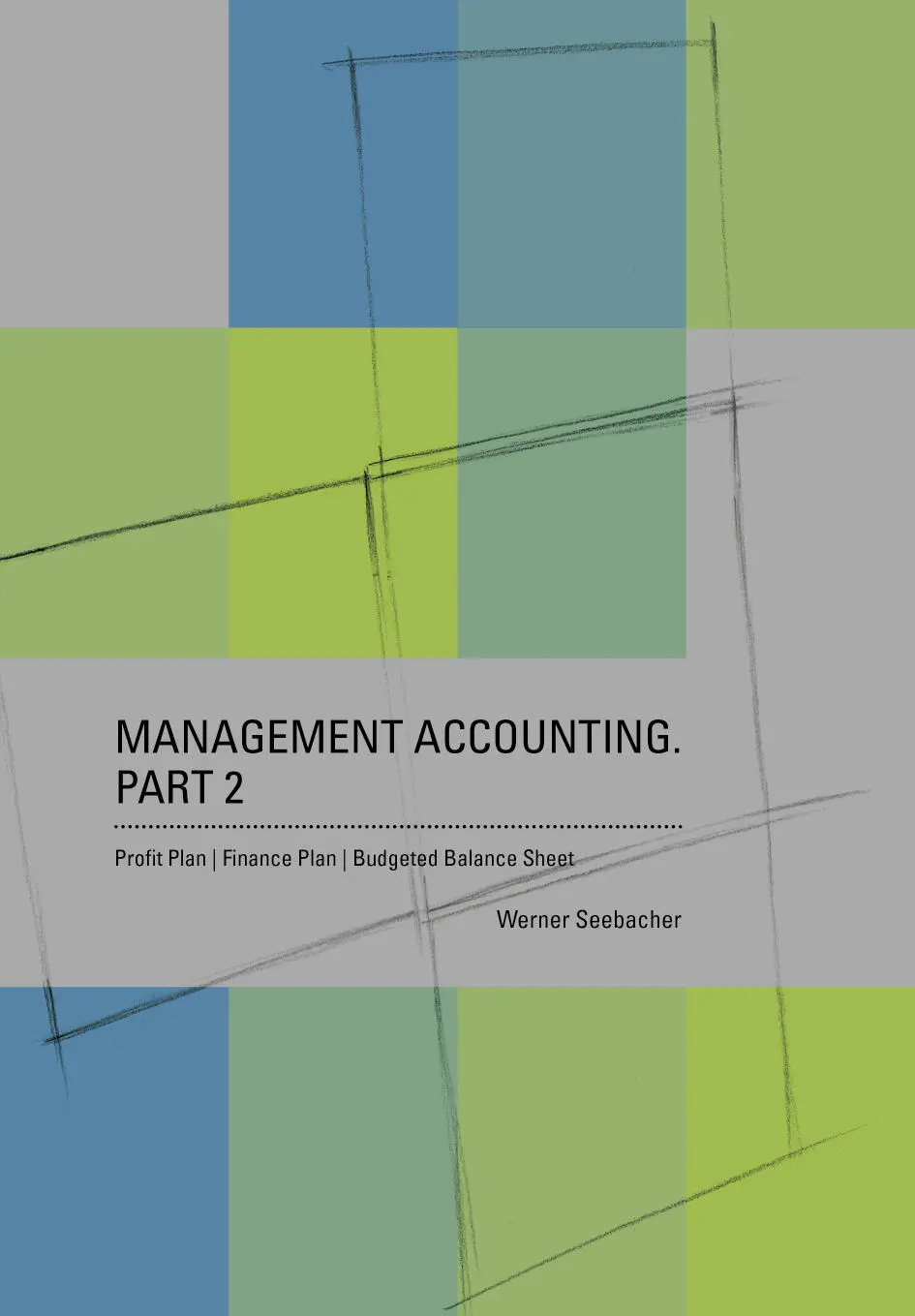
Werner Seebacher
Management Accounting.
Part 2
Profit Plan | Finance Plan | Budgeted Balance Sheet
Author
Werner Seebacher
ISBN 978-3-7375-8628-3
First Edition 2016
www.management-accounting.net
Prohibition of photocopy | Prohibition of multiplication
The free use of this book – rule of multiplication for use in schools and universities – cannot be applied on this book, as it has been intended for individual teaching purposes from its quality and its specification (see § 42 Abs 6 öUrhG; § 53 Abs 3 dtUrhG). Any multiplication can be fair use only with prior approval by the author.
Disclaimer of liability
Please note that despite careful processing all data, annotations, presentations and calculations in this book, as well as in the numerical examples given, are made without warranty and that the author refuses to accept any liability.
Copyright | Licensing agreements
This e-book is a work of own, intellectual creation according to § 1 Abs 1 öUrhG or § 1 dtUrhG respectively and like that, it is subject to the Act Concerning the Protection of Copyright öUrhG or dtUrhG respectively for works of language. All rights, particularly the right for duplication, distribution and translation is subject to authorization. No part of this work may be reproduced in any form without prior consent of the author, it must not be duplicated, processed or distributed by means of electronic systems. The user of an e-book is only authorized to read the contents of this e-book. The e-book must not be saved as a whole, sent by e-mail or printed out without consent of the author (§ 42 Abs 8 öUrhG; § 53 Abs 4 dtUrhG).
Download
By downloading the e-book the user commits himself to acknowledge and adhere to the copyright, utilization rights and all other property rights. The user particularly commits himself to download this work of own, intellectual creation only once for personal use.
Foreword

“Management Accounting, Part 2 - Profit Plan | Finance Plan | Budgeted Balance Sheet” is based constantly on the textbook “Management Accounting”.
The textbook “Management Accounting.” deals with the “Big Picture” – the Accounting/Controlling Overall Context – as well as with the elements presenting this connection: Balance Sheet | Profit/Loss Account | Profit Plan | Finance Plan | Budgeted Balance Sheet.
“Management Accounting. Part 2 - Profit Plan | Finance Plan | Budgeted Balance Sheet” – basing on the “Big Picture” – deals with the contents of and the connections between profit plan, finance plan and budgeted balance sheet. Building on them, the effects of concrete business activities in and on profit plan, finance plan and budgeted balance sheet are presented and annotated. They are described in form of case studies.
“Management Accounting. Part 2 - Profit Plan | Finance Plan | Budgeted Balance Sheet” is directed towards students and practitioners – to students doing business courses in the framework of their basic education or their introductory semesters respectively, to students doing postgraduate programs as well as practitioners in management jobs.
“Management Accounting. Part 2 - Profit Plan | Finance Plan | Budgeted Balance Sheet” is supplemented by “Management Accounting. Part 1 - Balance Sheet | Profit/Loss Account”.
Overview of the Contents

1. Introduction
2. Survey of the Contents
3. Profit Plan | Finance Plan | Budgeted Balance Sheet
4. Profit Plan | Finance Plan | Budgeted Balance Sheet - Numerical Examples
5. Key Figures | Ratios
Table of Contents

1. Introduction
2. Survey of the Contents
2.1. Balance Sheet
2.2. Profit/Loss Account
2.3. Balance Sheet | Profit/Loss Account
2.4. Balance Sheet | Profit/Loss Account
Profit Plan | Finance Plan | Budgeted Balance Sheet
2.5. Profit Plan
2.6. Finance Plan
2.7. Profit Plan | Finance Plan
2.8. Budgeted Balance Sheet
2.9. Finance Plan | Budgeted Balance Sheet
2.10. Profit Plan | Finance Plan | Budgeted Balance Sheet – the Big Picture
3. Profit Plan | Finance Plan | Budgeted Balance Sheet
3.1. Profit Plan
3.1.1. Profit Plan and Profit/Loss Account
3.1.2. Profit Plan and Contribution Margin Costing
3.1.3. Profit Plan – Internal and External Accounting
3.2. Finance Plan
3.2.1. Result after Tax
3.2.2. Depreciation
3.2.3. Provisions
3.2.4. Provisions for Taxation
3.2.5. Reserves
3.2.6. Goods on Own Account (Capitalized)
3.2.7. Receivables from Trade
3.2.8. Liabilities from Trade
5.2.9. Inventory
3.2.10. Other Receivables
3.2.11. Other Liabilities
3.2.12. Deferred Charges
3.2.13. Deferred Income
3.2.14. Investments
3.2.15. Long-Term Liabilities | Loans | Credits
3.2.16. Capital Increase
3.2.17. Dividends | Distributions
3.2.18. Surplus of Cash | Demand for Cash
3.2.19. Summary of the Items | Mathematical Signs in the Finance Plan
3.3. Budgeted Balance Sheet
3.4. Connections
3.4.1. Profit Plan | Finance Plan – Connection
3.4.2. Finance Plan | Budgeted Balance Sheet – Connection
3.4.3. The Big Picture – The Overall Context
4. Profit Plan | Finance Plan | Budgeted Balance Sheet - Numerical Examples
4.1. Example 1: Foundation of an Enterprise
4.2. Example 2: Investment
4.3. Example 3: Financing
4.4. Example 4: Investment and Financing
4.5. Example 5: Purchase of Goods, Use of Goods, Turnover/Sales
4.6. Example 6: Deferred Charges
4.7. Example 7: Deferred Income
4.8. Example 8: Provisions
4.9. Example 9: Asset Disposal
4.10. Example 10: Goods on Own Account
5. Ratios
5.1. Ratios Balance Sheet | Budgeted Balance Sheet
5.2. Ratios Profit | Profit Plan
5.2.1. Minimum Turnover
5.2.2. Volume Range
5.2.3. Price Range
5.2.4. Volume Range | Price Range - Connection
5.2.5. Minimum Turnover (price-related)
5.3. Ratios Liquidity | Finance Plan
5.4. Ratios Profit | Profit Plan – Liquidity | Finance Plan
5.4.1. Turnover Rate – Receivables from Trade
5.4.2. Turnover Rate – Liabilities from Trade
5.5. Ratios Profit | Profit Plan – Balance Sheet | Budgeted Balance Sheet
5.5.1. Return on Investment | ROI
5.5.2. Return on Equity | ROE
5.5.3. Return on Sales | ROS
Author
Method
List of Relevant Literature
Index of Figures

1. Introduction

“Management Accounting.” is based on the idea that all accounting/controlling considerations in an enterprise are always focused on the Big Picture – the comprehensive overview or comprehensive presentation of these business activities as a whole. All business activities are always analyzed and evaluated with reference to this overall connection.
Читать дальше
